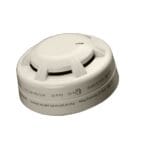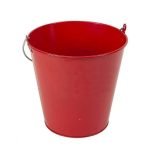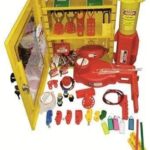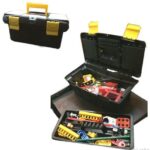Your list is empty, add products to the list to send a request
The Different Types of Fire Extinguishers and Their Uses

13
Jun
There are different types of fire extinguishers available, and every extinguisher is designed to handle specific types of fires. The most common types of fire extinguisher cylinder and their uses are as follows:
Water-Based Fire Extinguishers (Class A)
Basically, these extinguishers are filled with water and are effective against fires involving common flammable materials like paper, wood, and cloth. They are not appropriate for fires involving electrical equipment, explosive liquids, or cooking oil.
Foam Fire Extinguishers (Class A and B)
Foam extinguishers have a mixture of water and foam concentrate. They are efficacious against Class A fires (ordinary combustibles) and Class B fires (flammable liquids such as oil, gasoline, and grease). They work by smothering the fire and preventing re-ignition.
Carbon Dioxide (CO2) Fire Extinguishers (Class B and C)
Fire extinguisher CO2 cylinder are filled with carbon dioxide gas. They are suitable for use on Class B fires (flammable liquids) and Class C fires (electrical fires). CO2 displaces oxygen, robbing the fire of its fuel source. These extinguishers are not recommended for Class A fires.
Dry Chemical Powder Fire Extinguishers (Class A, B, and C)
Dry chemical powder extinguishers use a fine powder like sodium bicarbonate or mono ammonium phosphate, to suppress fires. They are effective against multiple Classes such as A, B, and C fires. The powder works by interrupting the chemical reaction of the fire.
Wet Chemical Fire Extinguishers
Wet chemical extinguishers are specifically designed for kitchen fires, particularly those involving cooking oils and fats (Class K fires). They contain a potassium-based solution that reacts with the oil to form a soap-like substance, creating a barrier to prevent re-ignition.
Clean Agent Fire Extinguishers (Class B and C)
Clean agent extinguisher use substances like FE-36, Halton, or FM-200. They are ideal for use on Class B and Class C fires, including flammable liquids and electrical fires. Clean agent automatic fire extinguisher by removing heat and interrupting the chemical reaction.
It is essential to remember that fire extinguishers should only be used if it is secure to do so and if the user has been properly trained. When selecting a fire extinguisher, it is crucial to consider the types of fires that are likely to occur in a typical environment and to comply with local fire safety regulations.



























